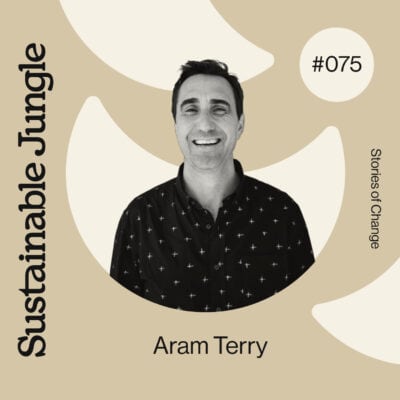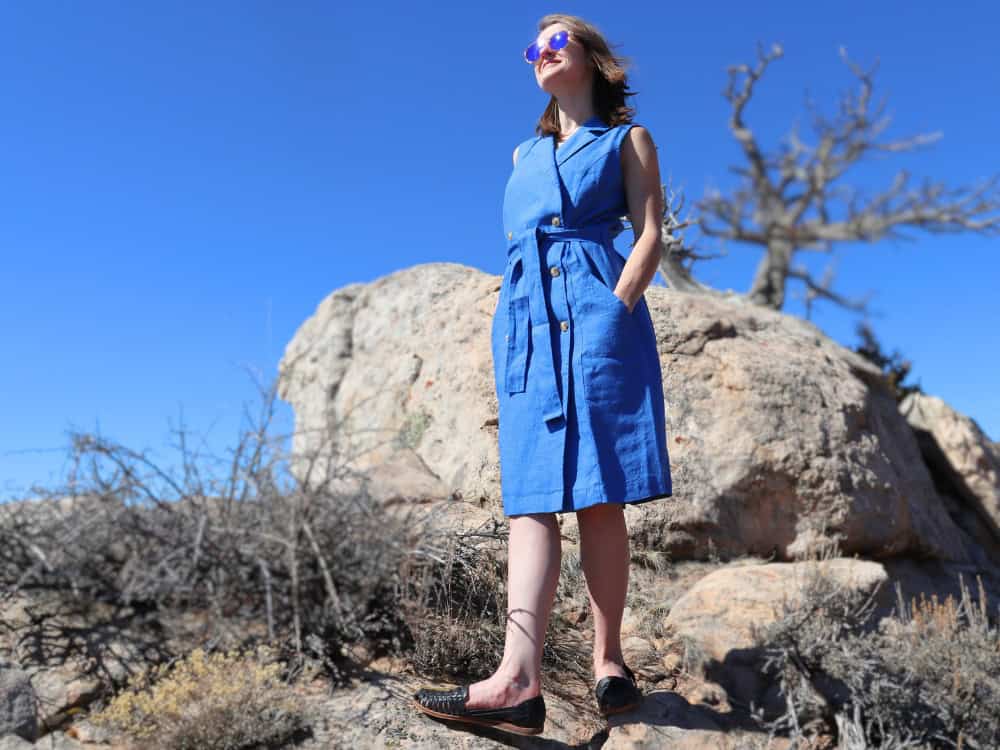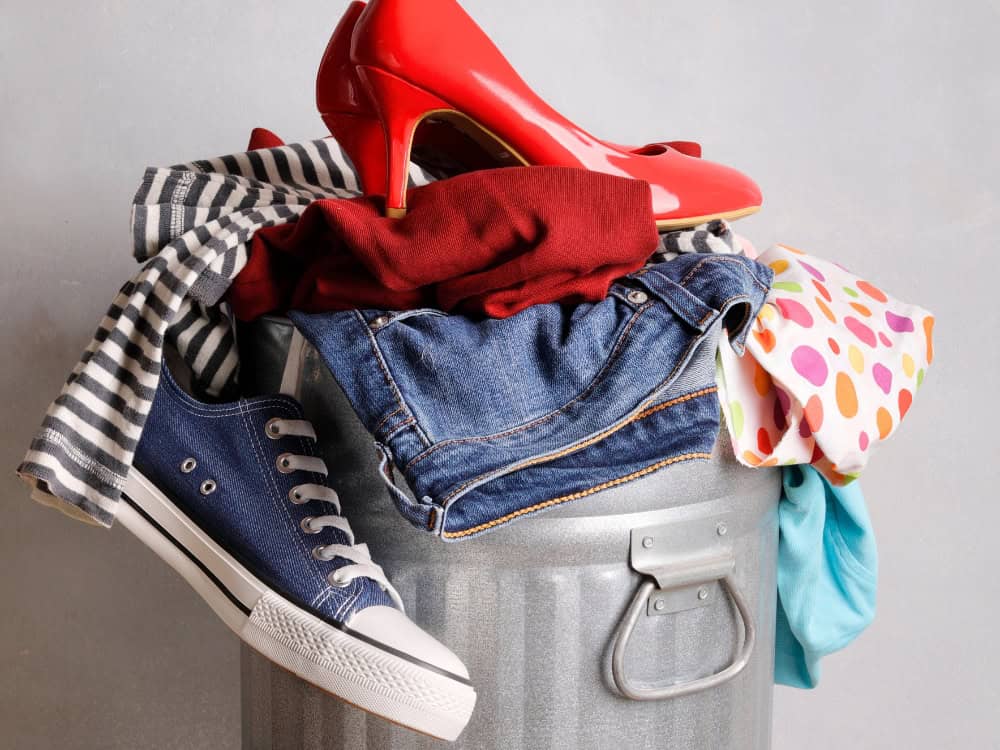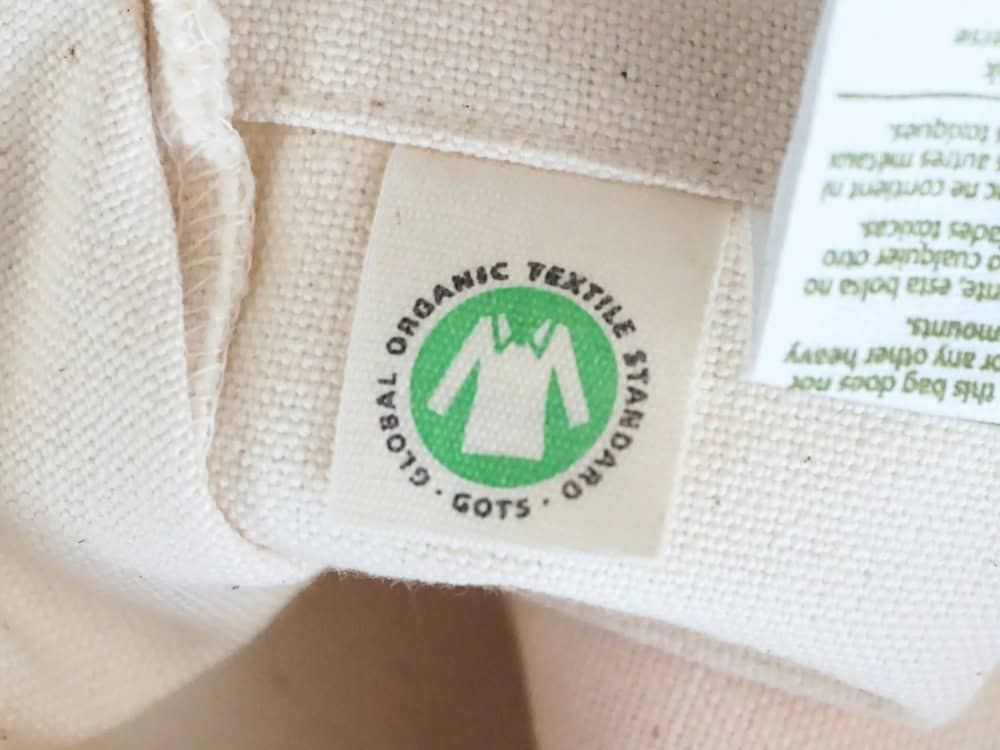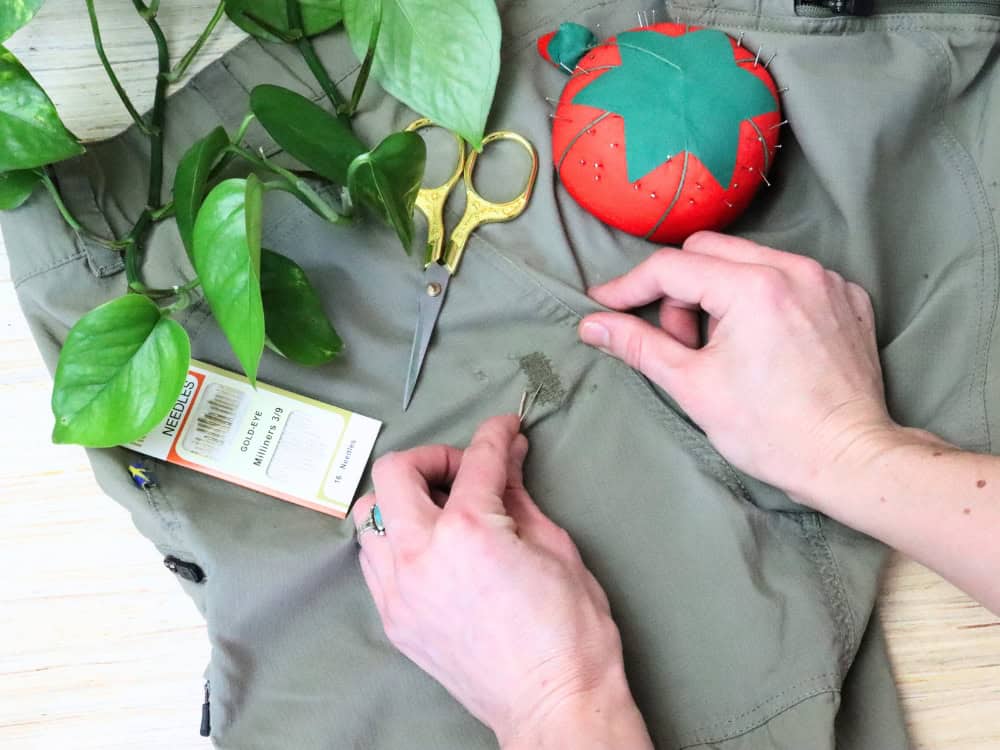We may love cheap price tags; but, you know what they say: you get what you pay for. Or as Lucy Siegle writes, “Fast fashion isn’t free. Someone somewhere is paying.”
But the reality is, fast fashion facts speak for themselves and a lot of people are paying—from the unfairly treated laborers to each and every person on the planet that has to deal with the environmental fallout.
It’s an understatement to say we all need to slow down and learn how to avoid fast fashion.
Contents: Ways To Stop Fast Fashion
- Consider Environmental Costs Jump to section
- Ask #WhoMadeMyClothes? Jump to section
- Take a Minimalist Approach Jump to section
- Prioritize Sustainable Materials Jump to section
- Look for Certifications Jump to section
- Explore Alternative (not) Shopping options Jump to section
- Buy From Better Fashion Brands Jump to section
Consider Environmental Costs
Knowing how to stop fast fashion starts with knowing why we should.
Fast fashion, according to Merriam-Webster is “an approach to the design, creation, and marketing of clothing fashions that emphasizes making fashion trends quickly and cheaply available to consumers”. What this definition fails to mention, however, is the incalculable social and environmental costs that keep price tags low and garments mass-produced.
We may be annoyed at the clutter in our drawers or our tightly packed closet, but the impact of our ever-growing wardrobes goes far beyond that. Amuck with fossil fuel-derived synthetic fabrics and a system of cheap clothes designed to hit the landfill, this unsustainable system of fashion is overwhelming our planet and polluting our oceans.
What was once two seasons for a clothing calendar—winter/fall and spring/summer—is now 50 to 100 “microseasons” each year thanks to fast fashion’s relentless desire to overhaul last week’s trends and sell sell sell. Some brands, like ultra fast fashion powerhouse Shein, take this to the extreme and product over 1 million (!) unique styles annually.
The impact of this is glaringly obvious:
- The fashion industry uses up 93 billion cubic meters of water (equal to the consumption of 5 million people) every year.
- The amount of clothing produced doubled between 2000 and 2014.
- 87% of the total amount of fiber in our clothes ends up being disposed of in a landfill or incinerated (many brands burn unwanted clothes to avoid fire sales which would reduce the sales of the full price “in-season” designs).
- The fashion industry is produces 1.2 gigatons of CO2 annually—more than maritime shipping and international flights combined.
- Textile waste is getting out of hand (and body). Americans throw away 70 pounds of clothing per year and UK residents are not much better.
- And if you thought recycling unwanted or old clothes would be a simple solution, sorry to be the bearer of bad news but textile recycling rates are the poorest of any reusable material. Only 15% of discarded are resold or recycled in the US.
Ask #WhoMadeMyClothes?
On April 24, 2013, an eight-story building collapsed in Bangladesh, killing and trapping more than 1,100 garment workers who were were forced to enter the building—the day after many had voiced concerns about hearing the walls crack. This became known as the Rana Plaza incident, and it turned the world of fashion on its head by shedding light on the exploitation of the garment workers behind our outfits.
While human rights abuses are still rampent in the industry, it’s no longer the accepted norm as brands and consumers alike strive toward stopping fast fashion, beginning with following Fashion Revolution’s advice and asking #WhoMadeMyClothes?
This is just a fancy hashtag for supply chain transparency. Check your favorite brand’s website and see if they disclose what factories they’re working with and how their workers are supported. Ideally these claims are backed by impartial auditing and investigative agencies. Such third party manufacturing certifications may not be perfect, but they are still the best way to take the guesswork out of this process and guard against false ethical claims.
If you’re still left with some unanswered questions, reach out to the brand directly and tell them you want to know more.
Take a Minimalist Approach
When it comes to conscious fashion, less is more.
When you factor in the inputs required for the raw materials, the chemicals and water necessary to process them, the countless hands that stitch the garments, the energy to operate the factories, and the fossil fuels required for shipping, there isn’t a single piece of clothing out there that’s impact-free—even if it comes from the most eco-friendly clothing brand around.
That’s why one of the most effective ways to avoid fast fashion is to avoid buying anything, period. Take a page from Marie Kondo’s decluttering bible or work on curating a minimalist wardrobe of only a few dozen pieces you truly love to wear.
When you do shop, shop intentionally. Underwear excepted, don’t buy anything new unless you need to.
Prioritize Sustainable Materials
What is the first thing we look at when shopping for healthy food?
The ingredient list. Fashion is no different—especially since materials alone are the most significant factor in determining the garment’s environmental and social costs. Some materials are more difficult to recycle. Some are created from non-biodegradable petroleum and will shed microplastics each and every time you wash them. Others (like rayon fabric) may be compostable, but require an enormous amount of toxic chemicals to produce.
Then there’s the sourcing of the materials to consider. Unless organically grown, more natural fibers are farmed in ways that require a tremendous amount of inputs (water, pesticides, fertilizer) that harm farm workers as much as the planet.
Study up on sustainable fabrics to know what to low-impact ones to look for, but generally speaking, organic clothing brands are usually a safer bet, because they ensure garments are both compostable at end of life and had a minimal chemical impact throughout the supply chain.
Look for Certifications
One of the best answers for how to end fast fashion’s lack of transparency is by demanding accountability for the claims a brand makes about their products.
See, sustainability is trending, which means you’ll have to do a little extra digging to ensure that what you see on the label is what you actually get. Even ultra fast fashion brands like Temu are starting to cache in on the green trend and baselessly market their thousands and thousands of products as ‘sustainable’.
This is where third party certifications come into play. They’re the mark that an impartial entity has audited some aspect of the brand’s supply chain to ensure it meets a certain standard of ethical or sustainable practices.
There are numerous ethical and sustainability certications out there—for everything from animal welfare to toxicity of finished products—but B Corp, Global Organic Textile Standard (GOTS), OEKO-TEX, bluesign®, Global Recycling Standard (GRS), and Fair Trade are some of fashion’s finest.
Explore Alternative (not) Shopping options
One of fast fashion’s biggest draws is its low low pricepoint. And we get it. Times are though and a lot of folks are struggling right now. We certainly don’t want to shame anyone for the wardrobe they can afford, but we do want to stress that it’s 100% possible to break the buy-wear-dispose cycle of fast fashion without breaking the bank.
Here are our favorite tips for how to avoid fast fashion on a budget by prioritizing clothes already in existence.
Host A Clothing Swap
Invite a few friends, grab a couple bottles of wine, and turn your trash into another’s treasure. This is a great way to get some new-to-you clothes, connect with friends after months of socially distancing, and keep clothes out of waste streams.
Shop Second Hand First
Fast fashion brands may be cheap, but second hand stores are generally cheaper—and so, so much better for our world. Plus, there’s a good chance you’ll find some exciting pieces and may even stumble across a barely-worn garment with the original price tag attached.
Repair, Don’t Replace
One of the biggest reasons we hit the “add to cart” button is because the garments we currently own are missing a button, have a stuck zipper, or a hole that keeps growing (looking at you, favorite leggings). Instead of checking out, try fixing up—now easier than ever thanks to a plethora of how-to YouTube videos and guides that will help you mend anything.
Yes, that new skirt is only $19.99, but those new skills are priceless and will last a lifetime (and help our favorite pieces do the same).
If mending is not one of your many talents, there are several online clothing repair services that can take on the task for you.
Rent Instead Of Buying
When you run into the problem of having “nothing to wear,” for an occasion—think weddings and award ceremonies—avoid the urge to buy new; rather opt for clothing and dress rental. You’ll find an endless choice of styles and sizes, and this is hands-down the most affordable way to wear something high-end and low-impact all at once.
Buy From Better Fashion Brands
The best way to stop buying fast fashion is to avoid buying fashion as much as you can—which is not to say always. Buying something new every once in a while is okay.
Fortuantely, more and more fast fashion alternatives are out there doing their part to combat fast fashion woes from the inside. Now it’s up to us to help from the outside by supporting brands—when we truly NEED to buy something, that is—that use better materials, transparent supply chain reporting, ethical manufacturing practices, and circular-minded fashion design.
Green is the new black, and wearing green clothes has never looked (or felt) so good.

